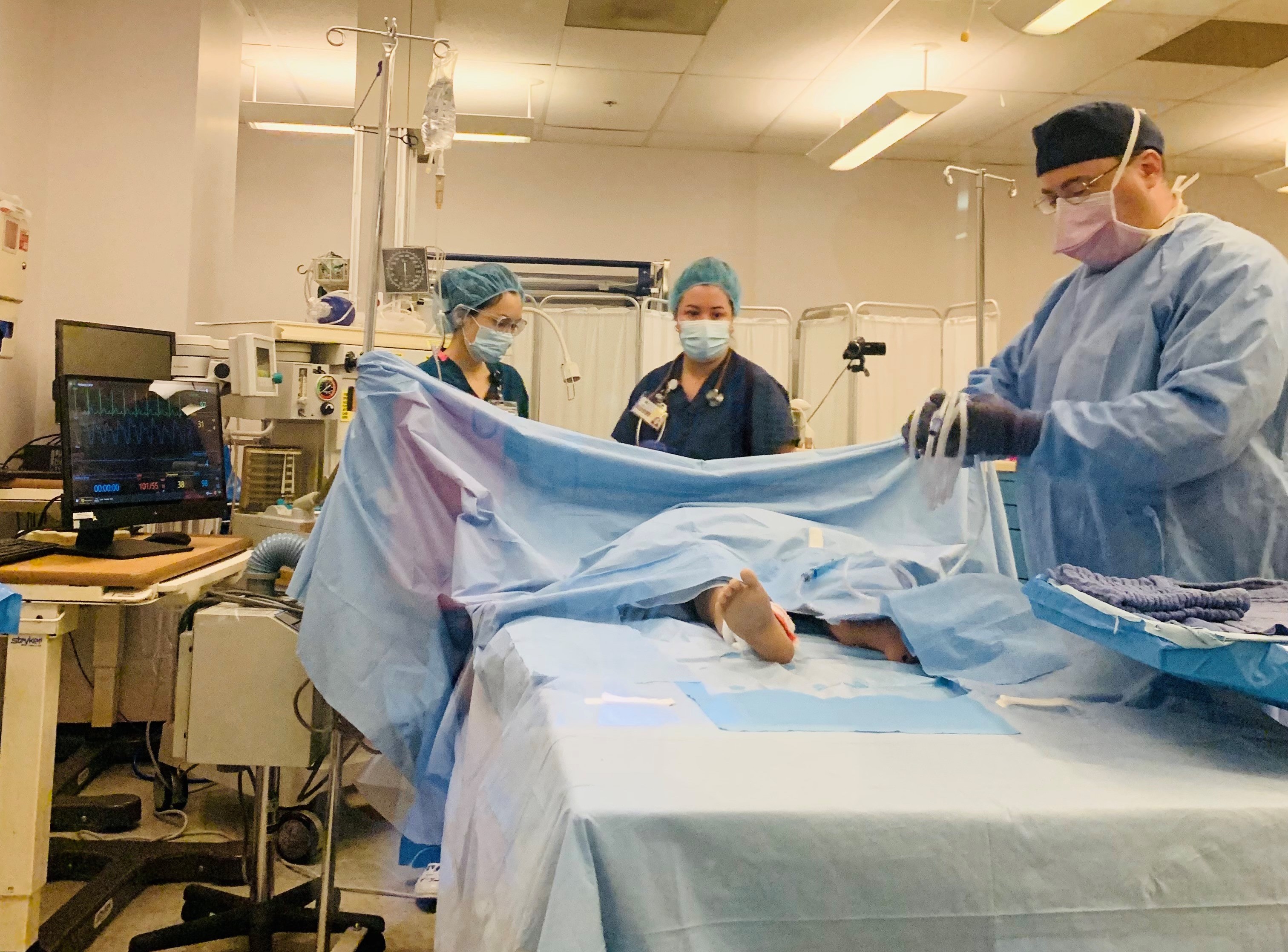Nurse Anesthesia Specialty Introduces Pediatric Simulation
August 10, 2021 Laura Hager
UMSON debuts high-fidelity pediatric simulation.
Pediatric anesthesia has long been a part of the Doctor of Nursing Practice (DNP) Nurse Anesthesia specialty curriculum; however, for the first time ever, on July 19, the specialty debuted high-fidelity pediatric simulation.
High-fidelity simulation, which uses technologically advanced manikins to provide the most realistic experience possible, allows students the ability to apply didactic knowledge, use critical-thinking skills, and reflect on performance in a safe environment. This type of simulation is highly interactive and allows students to use multiple skills, in contrast to low-fidelity simulation, which involves the use of role playing, case studies, static manikins, or simple workshops and focuses on one specific skill at a time.
Significant physiological and anatomical differences exist between adult and pediatric patients undergoing anesthesia, making the use of high-fidelity simulation critical. These variations are within the cardiovascular, respiratory, and renal/hepatic systems and alter the anesthetic approach. For pediatric patients, there is different airway equipment used, there are different dosages and fluid requirements, and pediatric patients’ vital signs can change much faster than do adults'.
The high-fidelity pediatric simulation was made possible through efforts by Priscilla Aguirre, DNP, CRNA, CRNP-AC, assistant professor; Richard P. Conley, DNP '20, CRNA, assistant professor and assistant director of the Nurse Anesthesia Specialty; and Anup Patel, MS, senior instructional technology specialist, Clinical Simulation Labs.

Pictured (all l. to r.), top: Nurse Anesthesia specialty students Maryanne Bilbao, SRNA, and Alicia Ward, SRNA, with Conley; bottom left: Nurse Anesthesia specialty students Molly Madden, SRNA, and Lou Carothers, SRNA; bottom right: Nurse Anesthesia specialty students Safa Soliman, SRNA, and Morgan Dunlow, SRNA, with Tina Dominey, BSN, RN, graduate teaching assistant